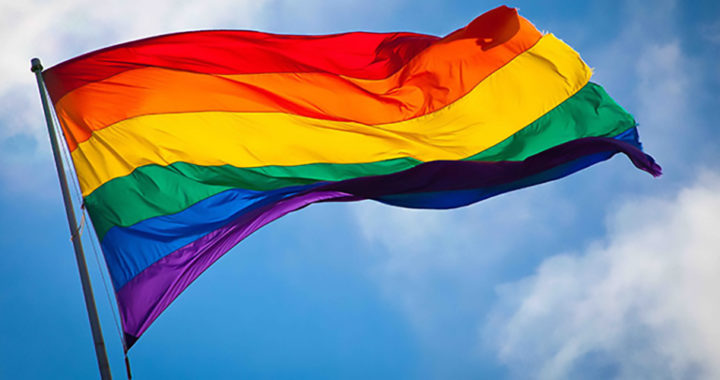The history of the Rainbow Flag is also the history of the LGBT movement in the United States and elsewhere in the world. Fundamentally, the flag symbolizes both the plight and pride of the members of the LGBT community and its allies.
Army draftee Gilbert Baker moved to San Francisco in 1970 as part of his military service. After his honorable discharge, he remained in the city to pursue his interest in artistry and political activism. Using his self-taught skills in sewing, he designed and created banners for several anti-war protest marches and the emerging LGBT movement in the U.S. Around this time, he met and became friends with Harvey Milk. His participation in the LGBT movement during this time also marked the beginning of the history of the Rainbow Flag.
The LGBT movement had several participating organizations. Each had carried their respective banners to represent their organizational identity and their pro-LGBT causes. But sociopolitical movements need a unifying theme and symbolism. Hence, in 1978, the Gay and Lesbian Pride Parade commissioned Baker to design a symbol that could be used for years to come.
Inspirations Behind the LGBT Rainbow Flag
Baker came up with the Rainbow Flag. There were several speculations concerning the true inspiration behind the symbolical banner. For example, American singer, actress, and gay icon Judy Garland was the purported inspiration behind the flag, particularly her iconic and Academy Award-winning ballad “Over The Rainbow,” which she sang for her starring role as Dorothy Gale in the 1939 movie “The Wizard of Oz.” Her accidental death that coincided days after the Stonewall Riots in June 1969 was a remarkable event for members of the LGBT community.
The Flags of the Human Race or the Flags of the Races, which was a rainbow flag that originated and was used at college campuses during the 1960s as part of demonstrations for world peace and the Hippie Movement, was also a speculated inspiration. The flag had horizontal stripes colored red, black, brown, yellow, and white from top to bottom. Baker supposedly adapted the design and used the colors of the rainbow, each having a specific meaning. Take note that the Hippie Movement of the 1960s was largely influenced by pioneering gay activist Allen Ginsberg.
Nonetheless, Baker believed that the Rainbow Flag best represents the LGBT community. The rainbow is part of nature and the variations in colors represent the natural diversity in human society and more particularly, in gender and sexuality.
During the San Francisco Gay Freedom Parade on 25 June 1978, activists and supporters flew the first two original Rainbow Flags for the first time. 30 volunteers had hand-dyed and stitched these flags. Initially, the flag had eight stripes with each color representing a particular meaning. Hot pink represented sexuality, red for life, orange for healing, yellow for sunlight, green for nature, turquoise for art, indigo for harmony, and violet for spirit.
The assassination of Harvey Milk, an openly gay San Francisco City supervisor, on 27 November 1978 had resulted in high demands for the Rainbow Flag. To meet the demand, the Paramount Flag Company began selling a version of the flag using stock rainbow fabric consisting of seven stripes of red, orange, yellow, green, turquoise, blue, and violet. Baker also ramped up his production of the original Rainbow Flag but he was forced to drop the pink stripe because of the unavailability of the fabric.
Evolution, Controversies, and Further Adoption
In 1979, the flag needed a modification because when hung vertically from a lamppost, the center stripe was obscured by the post itself. The only workaround was to adopt a flag design with an even number of stripes by dropping the turquoise strip. The six-color version that included red, orange, yellow, green, blue, and violet stripes has since become popular.
There have been numerous severe reactions associated with the Rainbow Flag. In 1989, the famous LGBT symbolism came to nationwide attention in the United States after John Stout sued his landlords and won when they attempted to prohibit him from displaying the flag from his apartment balcony in West Hollywood, California.
Nevertheless, the Rainbow Flag has become the worldwide symbol of the LGBT community. Although it originated in San Francisco in 1978 and became the standard banner of the LGBT movement in the United States, the global LGBT movement, members of the community, and their supporters have used the flag to symbolize the entire LGBT plight that ranges from anti-discrimination pleas to marriage rights or same-sex marriage and overall gender equality through civil rights. Undeniably, the history of the Rainbow Flag is also part of the history of the LGBT movement.
The pattern of the Rainbow Flag has also been used to mark the accomplishments of the LGBT movement. For example, when the Supreme Court of the United States arrived at the ruling on 26 June 2015 that orders states to recognize same-sex marriage and deem the legal union constitutional, several organizations and institutions had utilized the Rainbow Flag pattern, from their official logos to their adverts and marketing paraphernalia.
Moreover, the Twitter and Facebook accounts of the White House, media organizations such as the Huffington Post and Mashable, and companies and brands such as the American Airlines and YouTube had featured the same Rainbow Flag pattern in their social media avatars.
It is without a doubt that the history of the Rainbow Flag also echoes the struggles and accomplishments of the LGBT movement in the U.S. and in other countries where the symbolic flag has been raised, paraded, and waved.

